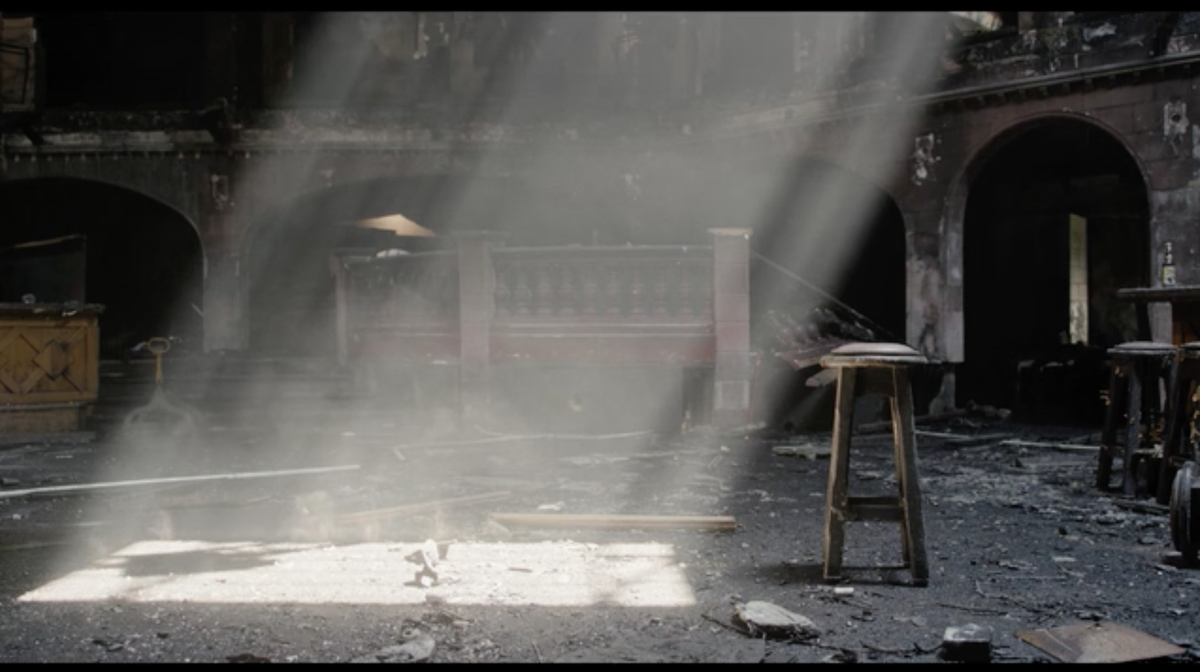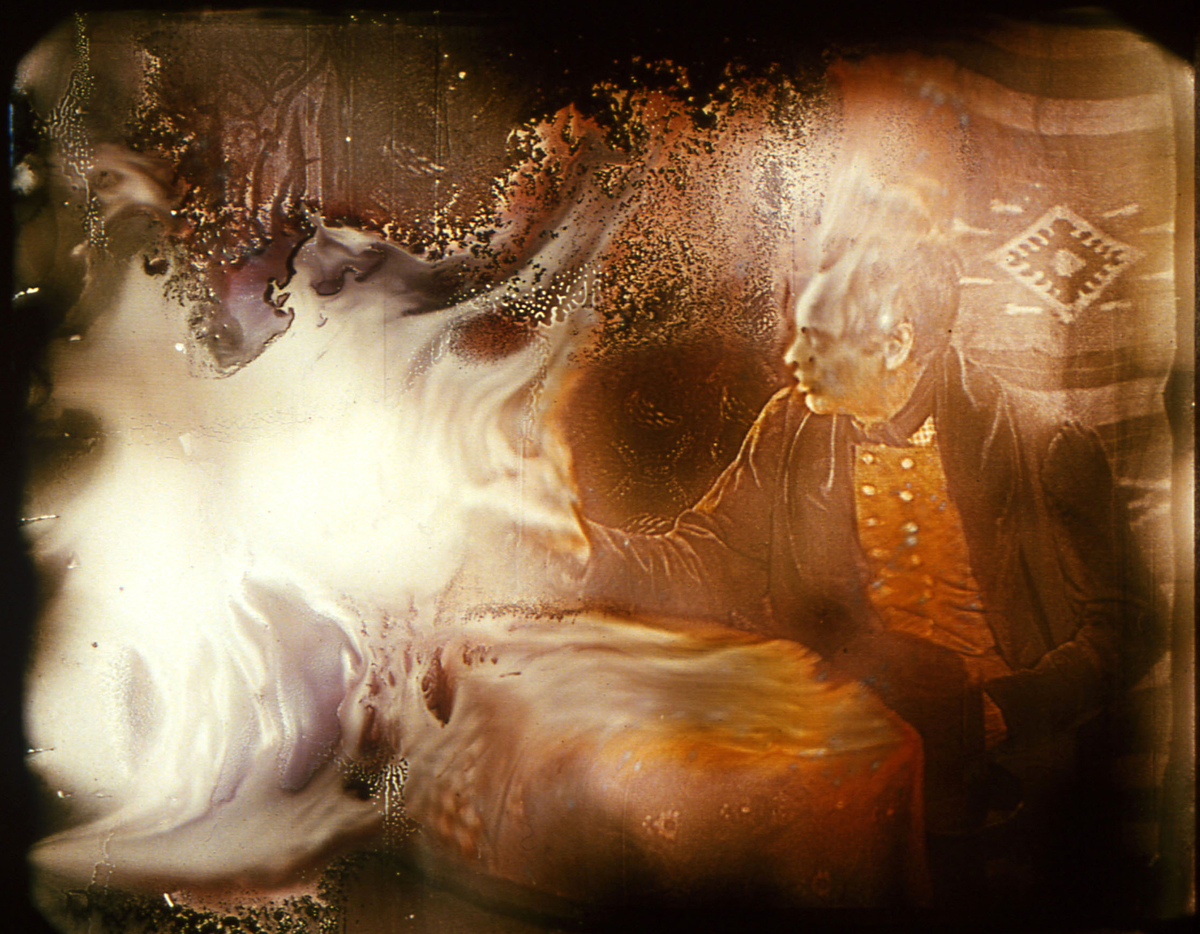
The Sublimity of Document: Cinema as Diorama
by Scott MacDonald
Oxford University Press 2019
In an interview with Austrian documentary filmmaker Nickolas Geyrhalter regarding his 2016 film Homo Sapiens, the intrepid film theorist, critic, educator and author Scott MacDonald stated, "You find a way to transform the decay we are seeing into something sublime." To which Geyrhalter responded, "If hypothetically there would no longer be humans, the world–nature–would not miss us and would immediately cope with the new situation. We would be missing but nobody and nothing would care. I wanted to stress that…Homo Sapiens is very much about the strength of nature and about the loss of humanity, which is maybe not as big a loss as we usually imagine."
The Sublimity of Document: Cinema as Diorama is MacDonald's seventh collection of in-depth interviews with avant-garde and documentary filmmakers. In it he continually reminds us that film, when it transcends the commonplace, has the power to transport us out of ourselves and provide a window into the world we may suspect exists but are unable to see, into perhaps "something sublime." In his introduction MacDonald clarifies the unique parallels he draws between documentary cinema and the creation of 19th-century museum dioramas, like those animal and early human habitats that still manage to provoke a sense of wonder every time I pass through the Akeley Hall of African Mammals in New York City’s American Museum of Natural History. For MacDonald, those early habitat dioramas are documents, precursors to the "cine-document." He acknowledges his view is similar to that expressed by Alison Griffiths in her book Wondrous Difference: Cinema, Anthropology, and Turn–of–the–Century Visual Culture.
Nineteen separate interviews are included in this volume, along with composite interviews to create a portrait of two different organizations—Harvard’s Sensory Ethnography Lab with Verena Paravel, J.P. Sniadecki, Stephanie Spray, Joshua Bonnetta and Libbie Dina Cohen; and Documentary Educational Resources, which includes Macdonald's discussions with former executive director Sue Cabezas, present executive director Alice Apley and myself. Having been both a reader of and a subject of MacDonald’s interviewing approach, I'm often struck by the realization that he is asking the same questions I would ask at precisely the moment he’s asking them. I do understand these published interviews are edited, but the timing and rhythm of the conversation seems right on target, not stilted and formulaic as so many interviews can be.
MacDonald does not shy away from issues that others might find "indelicate." He'd rather risk offending his subject in order to get at some underlying truth instead of delivering a boring experience for his readers, or in some cases a live audience, as was the situation with Fred Wiseman in 2010. MacDonald was there to facilitate a Q & A along with a screening of Wiseman's 1970 film Hospital. I was at that screening and his interaction with Wiseman is one of the few exceptions to MacDonald's prowess as an interviewer that I know of. I remember the tension in the theater when Wiseman seemed to be, at best, miffed by his questioner and outright defiant when things started to go south. MacDonald is gracious enough to point this out in the book, saying, "I suspect that what [Wiseman] may have seen as my academic manner annoyed him, and may have caused him to respond to me, in one or two incidents, in subtle defiance." In spite of his testiness as an interview subject, there is no denying Wiseman’s achievements as a filmmaker. Having made one or more films every year—44 features in all since Titicut Follies in 1967— puts him in a league of his own. MacDonald reiterates the conceptual foundation of his book while he draws an interesting comparison when he observes, "In a sense, each Wiseman film is a kind of modern habitat diorama, with a panoramic background and a detailed foreground."
Sequentially, MacDonald's interview with Geyerhalter follows his piece on Wiseman. This pairing is not accidental. Although he states, "Stylistically, Wiseman's films and Geyerhalter's are quite distinct," he goes on to make comparisons between their films, particularly Wiseman's Hospital and Geyrhalter's Donauspital (Danube Hospital, 2012). As he probes and prods Geyerhalter to respond, MacDonald deftly segues into a discussion about the challenge filmmakers face in attempting to make films about something as abstract as "systems," a subject that has fascinated both Geyrhalter and Wiseman throughout their careers. It is a testament to MacDonald's skill when after more than 20 pages of interview, during which Geyerhalter makes intimate, deeply revealing statements such as "I work in a rather isolated way, and I don't think I get influenced too much—because I don't expose myself to other kinds of work," the filmmaker then ironically states, "I don't like to talk about my films with interviewers." Apparently, when the right questions are being asked, you don't realize you are being interviewed.
Laura Poitras is probably the best-known filmmaker, both inside and outside the world of cinema, whose interview is included in this book. We know her through her Oscar-nominated My Country, My Country (2006) and Oscar-winning CITIZENFOUR (2014), her MacArthur "genius" Grant, and her 2014 Pulitzer Prize-winning reportage on Edward Snowden’s NSA whistleblowing—the subject of CITIZEN FOUR. Poitras discusses the fascinating backstory in the making of her films, a story as full of danger and intrigue as any feature-film drama you could imagine.
In contrast to Poitras, MacDonald includes filmmakers with lesser-known names but whose work is no less worthy. I was vaguely aware of Bill Morrison’s avant-garde work and his interest in the aesthetic, poetic and structural properties of decaying film. His first notable film was Decasia (2002). Its importance was confirmed when it was admitted to the National Film Registry in 2013. MacDonald prefaces each interview with an informative, loosely structured biography of that filmmaker's place in the film canon, and outlines how he came into contact with that particular filmmaker and how MacDonald uses those films as educational tools in the classroom. In the case of Morrison, this background provided the necessary groundwork to fully appreciate the interview that followed. Combined with the wonderful black-and-white photos from Decasia, Ancient Loops (2012) and the full-color images from The Mesmerist (2003), Light Is Calling (2004) and Tributes—Pulse (2011), the interview left me convinced these are films I must see.

Another surprise was the inclusion of Craig Johnson, whose name I connected to the Yanomamö anthropological fieldwork and film work of Napoleon Chagnon and Timothy Asch back in the late 1960s and early 1970s. In particular, Johnson was credited with the sound recording and sound editing for what may be the most influential and problematic ethnographic film ever made, The Ax Fight (copyright and release dates vary.) Johnson’s support role—and in some sense his views as an observer during this period of ferment in ethnographic film—along with his subsequent film editing work with John Marshall and Jean Rouch, provide an interesting perspective on ethics in cross-cultural filmmaking.
MacDonald's depth of knowledge and embrace of documentary and experimental cinema is on full display in The Sublimity of Document. The book updates past interviews and includes new work like the timely discussion with Maxim Pozdorovkin about his 2018 film Our New President. The Russian-born, New York-raised filmmaker’s earlier film Pussy Riot: A Punk Prayer (2013) was the first in a series about modern Russian life after the fall of the Soviet Union in 1991. "Fake news" and the political weaponizing of the media is Pozdorovkin’s focus in Our New President. His reflections on the evolution of propaganda and how we think about or come to know truth are eye-opening.
The Sublimity of Document may be the most aesthetically satisfying book of published interviews I've ever read. MacDonald has included a wealth of black-and-white images to accompany each interview and several separate sections of glossy, full-color frames from many of the films under discussion. As a film theorist, his arguments are accessible, jargon-free and engaging. As an educator, he thoughtfully provides a complete filmography in the addendum for each of the filmmakers covered in the book, or in the case of some, the website address where that information can be found. He also notes the distributor or source information for each title, an essential bit of information often left out of film survey books such as this. Every interview offered an epiphany of one sort or another—from the first with Ron Fricke, the cinematographer on Koyaanisqatsi (1983), to the last with J.P. Sniadecki. When MacDonald asks him about the thinking behind having the final shot in El Mar La Mar (2017) be a rainstorm, Sniadecki responds, "Cleansing and terrifying, biblical and primordial."
MacDonald has spent his career weighing in on some of the most complex issues in film and media of our time. Ultimately his goal is modest. "Every book I've written or edited, including this one, has been meant to energize other colleagues to consider including a broader panorama of cinema within their teaching and their personal experiences." Without a doubt, MacDonald has inspired an interest in films and their makers previously unknown to me. I suggest he’ll do the same for you.
Cynthia Close is the former president of Documentary Educational Resources. She currently resides in Burlington, Vermont, where she consults on the business of film and serves on the advisory board of the Vermont International Film Foundation.
